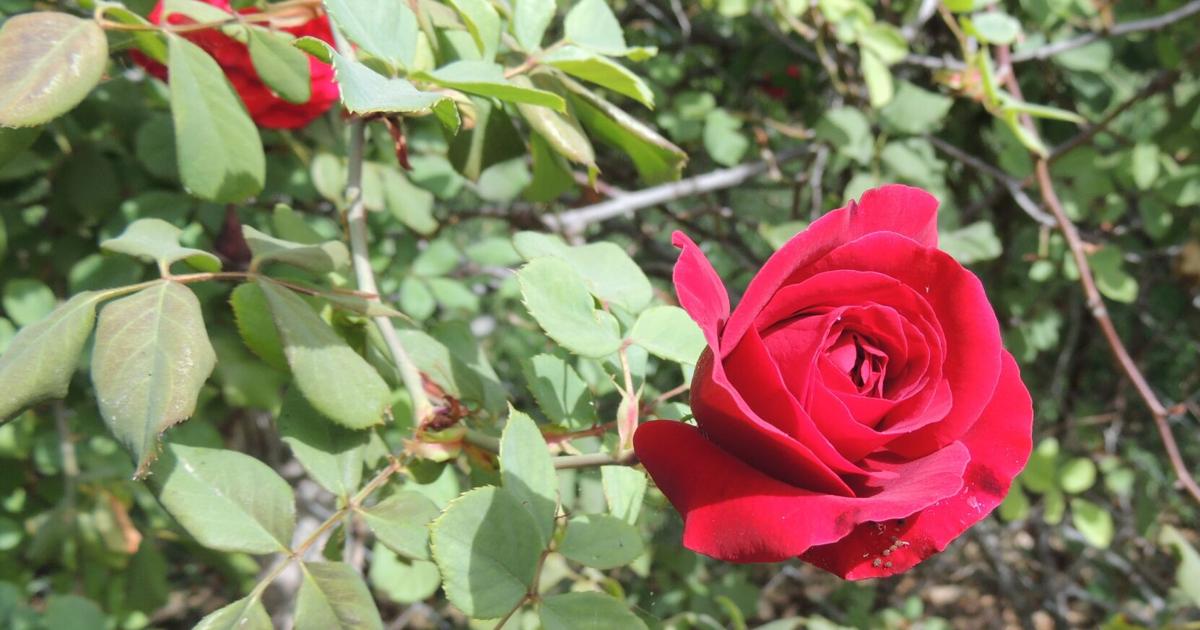GARDENING: Roses 101: Pruning Hybrid Tea Roses | women of the valley
Roses come in a myriad of colors and grow well in the Imperial Valley. January and February are the best months for planting new roses and pruning established ones. PHOTO CIFI.IT
Hybrid tea roses are one of the easiest plants to grow in the Imperial Valley. They are hardy enough to withstand our hot summers and they enjoy our cool winters. Roses have one of the most beautiful flowers in the world and their fragrance is delicious.
January and February, when roses are dormant, is the best time to prune them and prepare them for spring bloom.
Why prune roses? You can leave your roses alone, they will reach 5 to 6 feet tall and produce fewer and fewer flowers each year. If you prune your roses every year, removing half or two-thirds of their height, you encourage the growth of new canes and more flowers in the spring. With pruning, the flowers are also larger and have stronger stems.
Cutting dead canes improves air circulation in the rose to reduce mildew, black spot and other fungal diseases caused by too much moisture. And, of course, pruning maintains the correct shape of the rose.

The diagram shows the correct method for pruning a rose bush in January or February. Prune the canes to encourage new growth and produce more roses in the spring. Cut the canes above an outward-pointing bud to keep the plant open in the center for better air circulation.
To get started, you need the proper tools. Buy a pair of high-quality hand pruners, a set of long-handled loppers, and leather gloves. Pruners with curved blades are preferred over those with flat blades. Your pruners should be disinfected with each different rosebush size with a little bleach to limit the spread of disease from one rosebush to another.
Sharpen your pruners before each pruning season to limit the spread of disease and ensure clean, clean cuts. If the pruners are dull, they will tear the stems and allow disease to enter the plant.
To prune a hybrid tea or grandiflora rose, start by cutting off all dead and damaged stems. Prune all sucker stems from the base of the rose. Then cut the remaining canes to half or two-thirds of their height. Choose three to five of the strongest canes to guard and trim the other canes. The goal is to create an open center that allows good circulation of light and air.
When pruning a cane, look for a bud ready to form a new cane that faces the outside of the plant. Cut the cane 0.5 inch above this bud and at a 45 degree angle. You can also prune above a five-leaf leaf.
To prune a shrub rose, which repeats blooms on mature canes, prune all canes by one-third and remove one-third of old canes each year. Climbing roses are also repeat bloomers and are only pruned to maintain correct size and shape.
After pruning is complete, sprinkle a rose-based systemic fertilizer around the base of the plant and dig it into the soil. Water to get the fertilizer down to the roots of the plant. A systemic fertilizer contains ingredients that kill aphids and other unwanted insects. Fertilize monthly from February to April and from September to November.
If a rose has leaves that look like powder, it probably has powdery mildew – a fungal disease. Mix 1 teaspoon of baking soda, ½ teaspoon of cooking oil and 1 liter of warm water. Pour into a spray bottle and spray the infected leaves. Commercial sulfur dusts also control powdery mildew.
Some popular hybrid roses to add to your rose garden include Chrysler Imperial and Mr. Lincoln (red), Tropicana and Brandy (orange), Perfume Delight and First Prize (pink), and Oregold and Midas Touch (yellow).
If you haven’t tried growing roses, plant one now to enjoy beautiful blooms for years to come.
Happy gardening.
Karen Bowen is a master gardener and writes a Desert Gardener column for the Yuma Sun newspaper. She also writes articles for the Greenleaf newsletter of the Arizona Federation of Garden Clubs. F


Comments are closed.